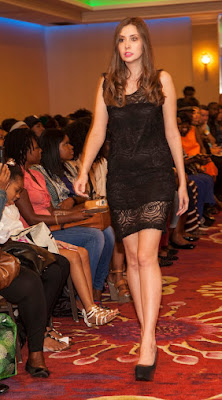10 Shocking Truths About Fashion Shows
Q: How do they decide what order the models walk in at the show?A: It's really up to the designer to set the order of the show. That said, the opening and closing spots are always the most coveted positions in the lineup, and they usually go to the biggest model or models in the show. Some models won't even walk in a show without being guaranteed one of these bookend positions, especially when it comes to smaller, less prestigious shows. At the same time, a new model can see her career fast-tracked if she opens or closes a big show like Calvin Klein, Prada, or Marc Jacobs because it is seen as a huge endorsement by an industry leader.
Q: Why do designers only hire super skinny models?A: A lot of designers just have a very narrow view of what is beautiful, but that is changing. IMG Models, one of the most powerful modeling agencies in the world, is working topromote curvier women on the runway and the more noise consumers make around this issue, the faster change will come.
Q: Do models get to keep the clothes after the show?A: No. A show is really just a preliminary introduction to the collection — the clothes are still needed for at least a few more months for sales, production, editorial, and celebrity-dressing purposes. Only after they are on sale in stores and the next collection has been shown can those older pieces be given away.
Q: How much money do models get paid per show?A: Anywhere from $0 to $20,000 or more; it just depends on the model and the show. Supermodels like Karlie Kloss and Gisele Bündchen can make thousands of dollars walking in shows for brands like Chanel or Dior, and there are rumors about models making much much more, especially when walking in the show is part of a larger contract with that brand or if they are on exclusive (only walking for one designer that season). Less established models, on the other hand, often make next to nothing. Usually these models are working on smaller shows, for designers who do not have the budgets to pay them in cash and must instead pay them in trade, which really sucks if the model doesn't actually like the clothes.
Q: How do people in those street style photos afford all those designer clothes?
A: Often, they don't. One of the perks of being an editor is getting free stuff and deep discounts from designers. Also, given how popular street style photography has become, many designers actually loan looks to editors just to wear to the shows.
That bag was definitely borrowed.
Q: How do I get tickets to go to the shows?
Q: Do designers ever repeat past looks?A: Sometimes, but it's really not in their best interest. The whole thing about fashion is that it's supposed to be constantly evolving. Too much repetition, and people get bored. Also, by not repeating themselves designers create a sense of urgency around every collection since people know that they will only have one chance to buy whatever it is the designers are making.
Q: What is the key to getting photographed by one of those street style photographers outside a show?A: Standing around in fur. You might despise fur, but it's like catnip to street style photographers. The more they see, the more they swarm. If they don't swarm right away, you've got to be willing to devote some time to just standing around, waiting. It will happen
if you stand there long enough.
It wasn't until we added fur cuffs to Anna Breslaw's Fashion Week look that the photographers really started going nuts. By the time we added a fur hat it was pandemonium.
Q: At the end of the show, why do some designers walk down the runway and others don't?
A: It's just a matter of personal preference. Some designers like to make a big show of themselves, while others are more humble. That's all.
Q: Who decides what the trends will be?
A: Designers make the clothes — sometimes with the help of professional trend forecasters, sometimes not. Then editors identify the trends based on how many designers are doing whatever it is (pajama shirts, oversized pink cots, leather pants, etc.). The general rule is that you need a minimum of 3 designers to establish a trend, but bigger designers like Dior or Prada can often launch trends all on their own because they are so influential that anything they do will be instantly knocked off and copied by other designers, thereby becoming a trend.
That said, a trend is only successful if it sells and new trends often grow out of the successes and failures of old trends, so, in a way, it is the consumers themselves who decide what the trends will be just by shopping.






































Comments
Post a Comment